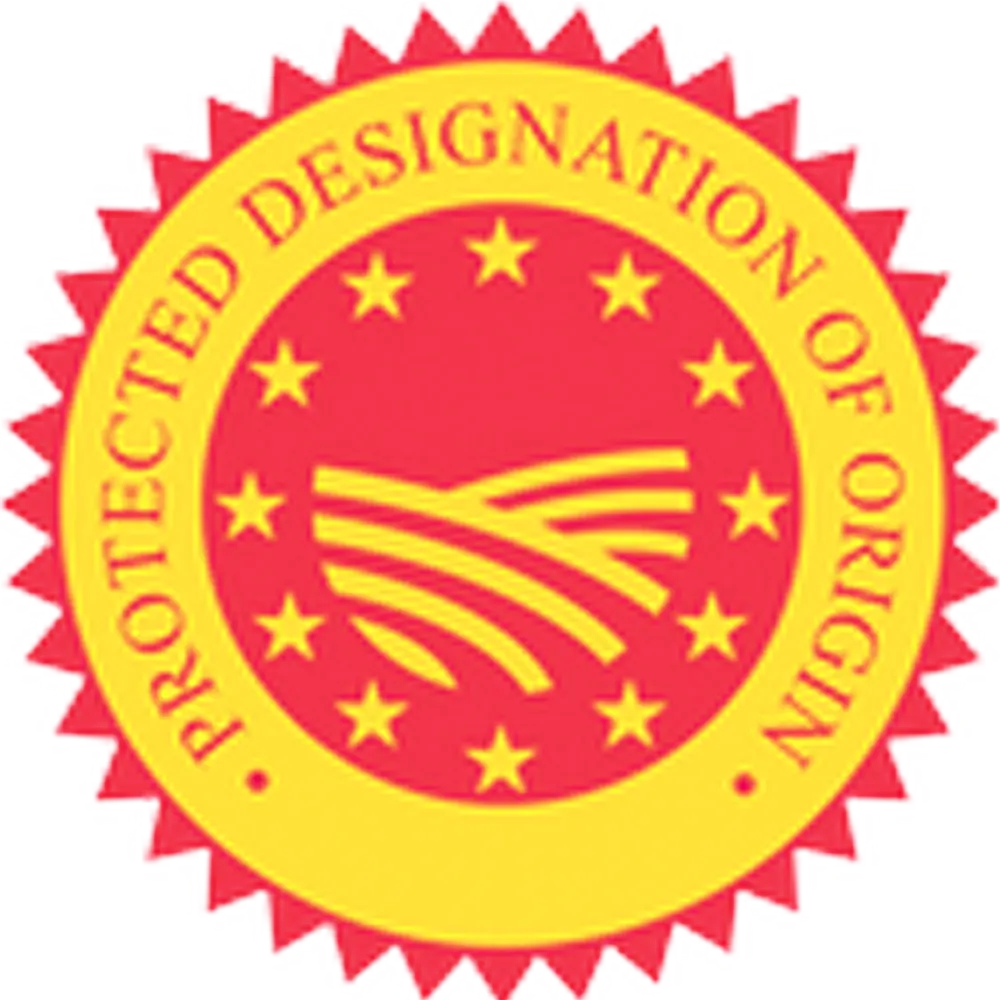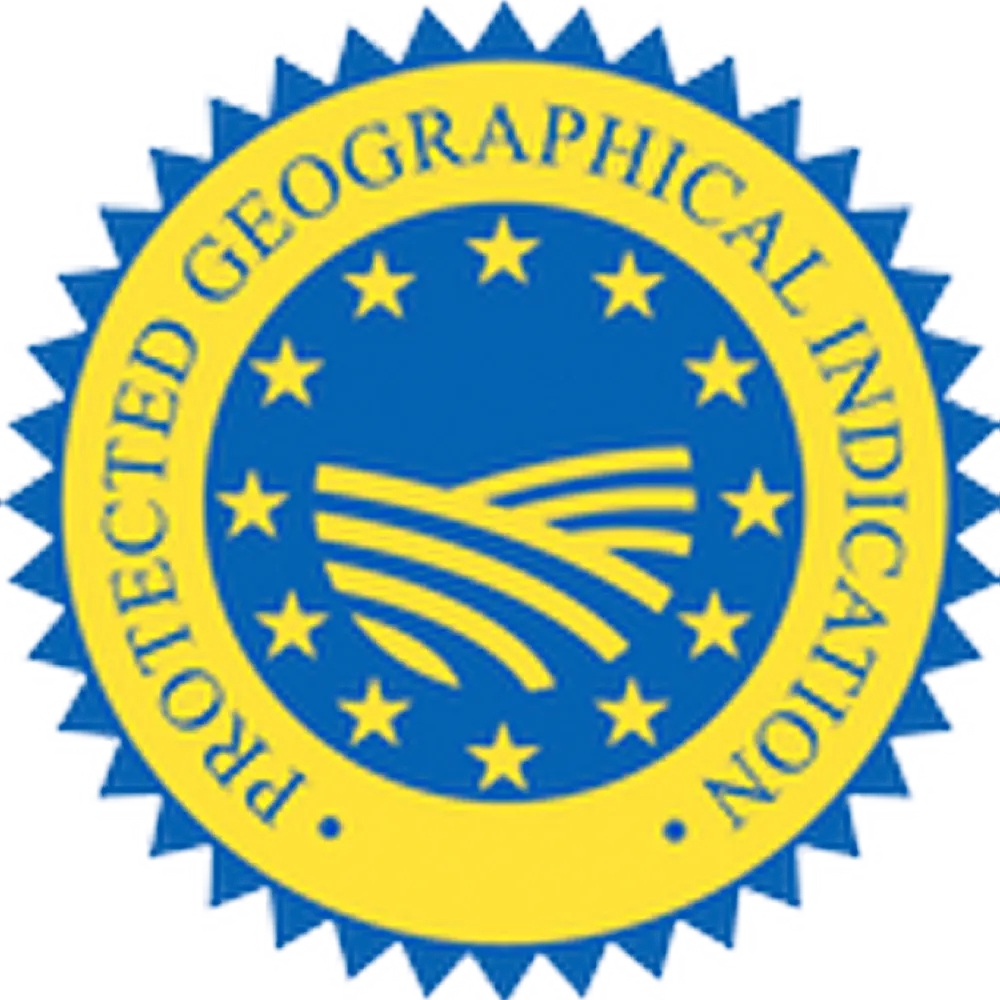GeographicalIndicationsProducts
Monday, June 26, 2023
Registration Number: 656
Registration Date: 25.01.2021
Application Number: C2013/003
Application Date: 24.12.2012
Name of Geographical Indication: Edirne Almond Paste
Product Name: Almond paste
Type of Geographical Indication: Place of Origin Mark
Registered by: Edirne Chamber of Commerce and Industry
Address of the Registrar: 1.Murat Mah. Talat Paşa Cad.No:80 Merkez EDİRNE
Geographical Boundary: Edirne province
Usage Method: The expression "Edirne Badem Ezmesi" and the geographical indication emblem are placed on the product packaging. When not used on the packaging, the expression "Edirne Badem Ezmesi" and the geographical indication emblem are kept prominently visible at the establishment.
Product Description and Distinguishing Features:
Edirne Almond Paste, with a historical background in the Ottoman Palace Cuisine, is obtained by grinding and mixing dried almonds of the Hacı Alibey (48-5) variety, which grows wild in Edirne, with syrup.
The Hacı Alibey (48-5) variety of almonds grown in Edirne has a yield range of 33-38%, with a double kernel ratio of 22-27%. They are medium-strength trees, early ripening, with almond length ranging from 22-27 mm and width from 10-15 mm. The weight of the shell is 3-4 g, and the weight of the kernel is 1-1.5 g.
The physical and chemical properties of Edirne Almond Paste are provided below.
Production Method:
Edirne Almond Paste is produced with ±5% deviation, consisting of 55% sugar, 35% almonds, and 10% water.
The Hacı Alibey (48-5) almonds grown in Edirne are boiled in hot water, and their brown shells are peeled off and dried in 70 °C ovens. The dried almonds are ground to a particle size of 1-5 mm.
According to the Turkish Food Codex Sugar Regulation, white sugar, water, and acidity regulator cream of tartar (potassium tartrate) are mixed in a pot and boiled up to 120 °C to create a syrup. The ground almonds are added to the syrup to obtain almond paste dough. The almond paste dough is poured onto marble countertops to cool down. The cooled paste is manually kneaded into long, thin rolls and cut into cylindrical shapes. Edirne Almond Paste is then packed in a Bristol cardboard box lined with wax paper for sale. It is stored in a cool and dry place during hot weather and at room temperature in a dry environment during cold weather.
Production, Processing, and Other Operations within the Geographical Boundary:
For the production of Edirne Almond Paste, almonds obtained from Hacı Alibey (48-5) almond trees, which grow wild in Edirne, are used. Since the production of Edirne Almond Paste requires craftsmanship and is associated with the geographical boundary, all stages of production must take place within the geographical boundary.
Inspection:
Inspections are carried out regularly every six months by an inspection body composed of at least one expert from Edirne Chamber of Commerce and Industry, Edirne Municipality Inspection Department, Edirne Governorate Public Health Directorate, and Edirne Provincial Directorate of Agriculture and Forestry. Inspections are also conducted whenever necessary or in case of complaints.
The following criteria are considered during inspections:
- Verification that the almonds used in production are obtained from Hacı Alibey (48-5) almond trees grown in Edirne. Inspections focus on the external appearance of the almonds and the weight of the shell and kernel.
- Ensuring compliance with the production method.
- Verification of the appropriate use of the Edirne Almond Paste geographical indication and the place of origin mark emblem.
The inspection body may engage or procure services from public or private organizations, as well as experts who are individuals or legal entities, during the inspection process. The registrar is responsible for conducting the legal processes to protect the rights.
Tuesday, May 23, 2023
Wednesday, January 25, 2023
Wednesday, January 25, 2023
Registration Date: 09.09.2019
Application No: C2012/129
Application Date: 17.09.2012
Name of Geographical Indication: Edirne Mis Fruit Soap
Product Name : Soap
Type of Geographical Indication: Geographical indication
Registrant : Edirne Chamber of Commerce and Industry
Address of the Registrant: 1. Murat Mah. Talat Pasa Cad. No: 80 EDIRNE
Geographical Boundary: Edirne province
Usage: Edirne Mis Fruit Soap phrase will appear on the product easily.
Monday, January 2, 2023
Registration Date: 28.12.2017
Application No: C2013/033
Application Date: 03.04.2013
Name of Geographical Indication: Kırklareli Hardaliye
Product / Product Group: Beverage
Type of Geographical Indication: Geographical indication
Registrant: Kırklareli Chamber of Commerce and Industry
Address of the Registrant: Karakaş Mah. Karakasbey Sok. No: 10
KIRKLARELİ
Geographical Boundary: Kirklareli
Usage: Marking
Monday, January 2, 2023
Registration Date: 12.12.2017
Application No: C2014/059
Application Date: 26.08.2014
Name of Geographical Indication: Şile Cloth
Product Name: Woven Fabric
Type of Geographical Indication: Geographical Indication
Applicant: Şile Cloth Preservation and Development Association
Address of the Applicant: Hacı Kasım Mah. Uskudar Cad. Polat Apt. No:7 Şile / ISTANBUL
Geographical Boundary: Şile district of Istanbul province
Usage: Marking
Saturday, December 17, 2022
ProtectionDate:23.02.2010
Application No:C2010/006 Applicant:Municipality of Gonen
Address of the Applicant: Atatürk Cad.
Government Square Gonen Town Hall Gonen Balikesir
Name of Geographical Indication:Gonen Needle Lace
Product Name: Needle Lace
Typeof Geographical Indication Geographical Indication Geographical
Boundary:
Turkey The
Origin
of
the
Geographical
Indication:
Gonen Usage:
Marking
Thursday, December 15, 2022
Tuesday, July 19, 2022
Tuesday, July 19, 2022
Tuesday, July 19, 2022
Monday, July 18, 2022
Monday, July 18, 2022
Monday, July 18, 2022
Monday, July 18, 2022
Monday, July 18, 2022
Thursday, July 14, 2022
Thursday, July 14, 2022
Thursday, July 14, 2022
Thursday, July 14, 2022
Wednesday, July 13, 2022
Wednesday, July 13, 2022
Wednesday, July 13, 2022
Wednesday, July 13, 2022
Friday, July 8, 2022
Friday, July 8, 2022
Friday, July 8, 2022
Friday, July 8, 2022
Friday, July 8, 2022
Friday, July 8, 2022
Friday, July 8, 2022
Friday, July 8, 2022
Friday, July 8, 2022
Thursday, July 7, 2022
Thursday, July 7, 2022
Thursday, July 7, 2022
Thursday, July 7, 2022
Thursday, July 7, 2022
Thursday, July 7, 2022
Thursday, July 7, 2022
Thursday, July 7, 2022
Thursday, July 7, 2022
Thursday, July 7, 2022
Thursday, July 7, 2022
Thursday, July 7, 2022
Thursday, July 7, 2022
Thursday, July 7, 2022
Tuesday, July 5, 2022
Tuesday, July 5, 2022
Tuesday, July 5, 2022
Tuesday, July 5, 2022
Tuesday, July 5, 2022
Tuesday, July 5, 2022
Tuesday, July 5, 2022
Tuesday, July 5, 2022
Tuesday, July 5, 2022
Tuesday, July 5, 2022
Tuesday, July 5, 2022
Monday, July 4, 2022
Monday, July 4, 2022
Monday, July 4, 2022
Monday, July 4, 2022
Monday, July 4, 2022
Monday, July 4, 2022
Monday, July 4, 2022
Monday, July 4, 2022
Monday, July 4, 2022
Monday, July 4, 2022
Monday, July 4, 2022
Monday, July 4, 2022
Monday, July 4, 2022
Tuesday, November 30, 2021












